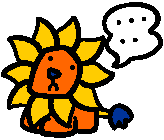
-------------------------------------------------------------------
#28 農業には適さない土地に家畜を放牧すれば食料の供給量を増やすことが
できます;それがどうして間違った事だと言うのでしょうか?
-------------------------------------------------------------------
世界には家畜の放牧ならできても農業をする事は不可能な場所もあり
ます。そうした地域に住む人々が農作物を売る事ができないので、生き
ていくために家畜を飼育しなければならないという話であれば、その事
を問題にする人はほとんどいないでしょう。
しかし、そうした土地の面積は現在の集約的畜産に使われている肥沃
な地域や半乾燥地域の面積にくらべると、はるかに少なく、世界の食料
供給に関し、目に見える程に貢献しているわけではありません。(道徳
的見地からそうした土地には住まない方が望ましいと考える人もいます)
本当の問題は肥沃な地域や半乾燥地域で行われている集約的畜産の方
にあります。こうした土地を牧畜のために使っている事が、世界の食料
供給量を減らしているのです。
キース・アカーは彼の著書、"A Vegetarian Sourcebook"の中で次の様
に書いています:
畜産を行うための土地やエネルギーや水資源は、それに相当する量
の植物性食品を生産する場合に比べると、どんな場所でも10倍か
ら1000倍必要とされる。更には、畜産業はこうした資源を単に
消費するのみならず、枯渇させてしまう。歴史を見ればその事が分
かる。世界中の土壌の汚染や侵食、地下水の枯渇、森林破壊といっ
た、私たちの食料生産システムを根底から脅かしている要素のほと
んどすべてが、この著しく破壊的な食料生産形態の結果なのである。
畜産業は歴史の上においても現在においても、世界中の森林破壊の最
も大きな原因となっています(1967年から1975年の間に失われた7千
万エーカー[訳注:約28万平方km]の森林の3分の2は牧草地にかえ
られました)1950�年から1975年の間に中央アメリカの牧草地の面積は
2倍以上になりました。そのほとんどは熱帯雨林を切り開いたものです。
この動きは多少おさえられる様になったものの、今なお、危機的で容赦
のない早さで続いています。
放牧は広大な土地を必要とし、その結果起こる土地の荒廃や土壌汚染
は大変、深刻な環境問題となっています。控えめに見積もってもアメリ
カの牧場の60%では過剰に放牧されており、そのために毎年、数十億
トンの耕土が失われています。今日に至るまで、アメリカの土壌の表土
の約75%が失われました。その85%は直接、家畜の放牧に起因する
ものです。過剰な放牧は人間によって引き起こされた土地の砂漠化の最
大の原因となっています。
放牧は「フィードロット(飼養場)方式」にとってかわりつつあるとい
う主張もあります。これは放牧していた家畜を最終的に屠殺用に太らせ
るためにフィードロットに移し、農地で作られた穀物を与えて飼育する
システムです。この方式によって、牧草地をいくらか減らす事はできま
すがなくせるわけではありません。そしてこの方式のフィードロットの
部分はなお、農作物を極めて非効率的に消費します(家畜によって人間
の食料をまかなう場合に必要とされる穀物は、人間がその穀物を直接食
べる場合に比べ、16倍にもなります)
アメリカでは収穫されたトウモロコシの80%、オート麦の95%は
家畜の餌になっていると見積もられてます。
TA
私は牛の土地で生まれ育った--それこそ、私がベジタリアンになった
理由だ。食肉は、動物にとっても、環境にとっても、あなたの健康に
とっても、おぞましいものでしかない。
k.d.ラング(ミュージシャン)

...............



-----------------------
#28 Grazing animals on land not suited for agriculture increases the food
supply; how can that be considered wrong?
-----------------------
There are areas in the world where grazing of livestock is possible but
agriculture is not. If conditions are such that people living in these
areas cannot trade for crops and must raise livestock to survive, few
would question the practice. However, such areas are very small in
comparison to the fertile and semi-arid regions currently utilized for
intensive grazing, and they do not appreciably contribute to the world
food supply. (Some would argue that it is morally preferable not to live in
such areas.)
The real issue is the intensive grazing in the fertile and semi-arid
regions. The use of such areas for livestock raising reduces the world
food supply. Keith Acker writes as follows in his "A Vegetarian
Sourcebook":
Land, energy, and water resources for livestock agriculture range
anywhere from 10 to 1000 times greater than those necessary to
produce an equivalent amount of plant foods. And livestock
agriculture does not merely use these resources, it depletes them.
This is a matter of historical record. Most of the world's soil,
erosion, groundwater depletion, and deforestation--factors now
threatening the very basis of our food system--are the result of this
particularly destructive form of food production.
Livestock agriculture is also the single greatest cause of world-wide
deforestation both historically and currently (between 1967 and 1975,
two-thirds of 70 million acres of lost forest went to grazing). Between
1950 and 1975 the area of human-created pasture land in Central America
more than doubled, almost all of it at the expense of rain forests.
Although this trend has slowed down, it still continues at an alarming and
inexorable pace.
Grazing requires large tracts of land and the consequences of
overgrazing and soil erosion are very serious ecological problems. By
conservative estimates, 60 percent of all U.S. grasslands are overgrazed,
resulting in billions of tons of soil lost each year. The amount of U.S.
topsoil lost to date is about 75 percent, and 85 percent of that is
directly associated with livestock grazing. Overgrazing has been the
single largest cause of human-made deserts.
One could argue that grazing is being replaced by the "feedlot
paradigm". These systems graze the livestock prior to transport to a
feedlot for final "fattening" with grains grown on crop lands. Although
this does reduce grazing somewhat, it is not eliminated, and the feedlot
part of the paradigm still constitutes a highly inefficient use of crops
(to feed a human with livestock requires 16 times the grain that would be
necessary if the grain was consumed directly). It has been estimated that
in the U.S., 80 percent of the corn and 95 percent of the oats grown are
fed to livestock.
TA
I grew up in cattle country--that's why I became a vegetarian. Meat stinks,
for the animals, the environment, and your health.
k.d. lang (musician)




